The 5th Kagra International Workshop / The 1st Kagra-Virgo-3G Detectors Workshop
Sala dei Notari
Perugia - Italy
The KAGRA International Workshop (KIW), February 14-15, 2019, replaced binational meetings between Japan and participating countries in order to promote more active collaboration within international community. The first KIW was held at Korea Institute for Science and Technology Information located in Daejon, Korea in June 2016. Subsequent workshops were held in Beijing (November 2016), in Taipei (May 2017) and in Seoul (June 2018). The main theme of the KIW centers on the KAGRA project, but also encompasses all related fields such as other gravitational wave experiments, gravitational wave sciences, and multi- messenger astronomy. Everybody interested in contributing to the KAGRA project and gravitational wave science in general is welcome to join the meeting.
The 1st KAGRA-Virgo-3G Detectors Workshop, February 16, 2019. The KAGRA experiment realises a bridge between the second generation of GW detectors, like Advanced Virgo and Advanced LIGO, and the third generation of GW observatories, like Einstein Telescope and Cosmic Explorer. In fact, KAGRA aims to participate to the next scientific data taking of the global network of advanced detectors, and, thanks to its innovative technological solutions, is pioneering the design of Einstein Telescope. The 1st KAGRA-Virgo-3G detectors workshop will exploit the synergies between KAGRA, Virgo and 3G observatories consolidating the long standing collaboration tradition between the corresponding scientific communities.
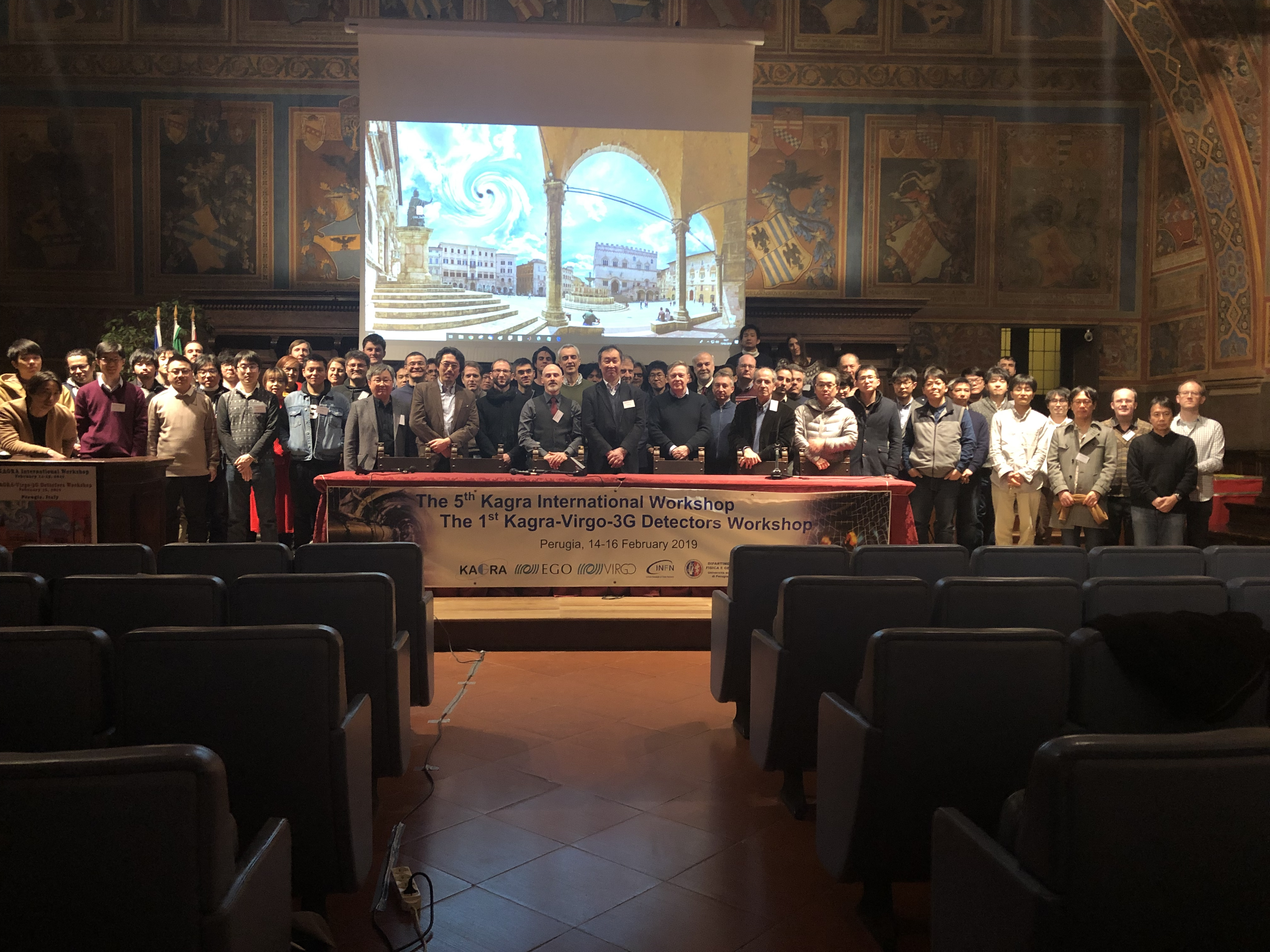 |
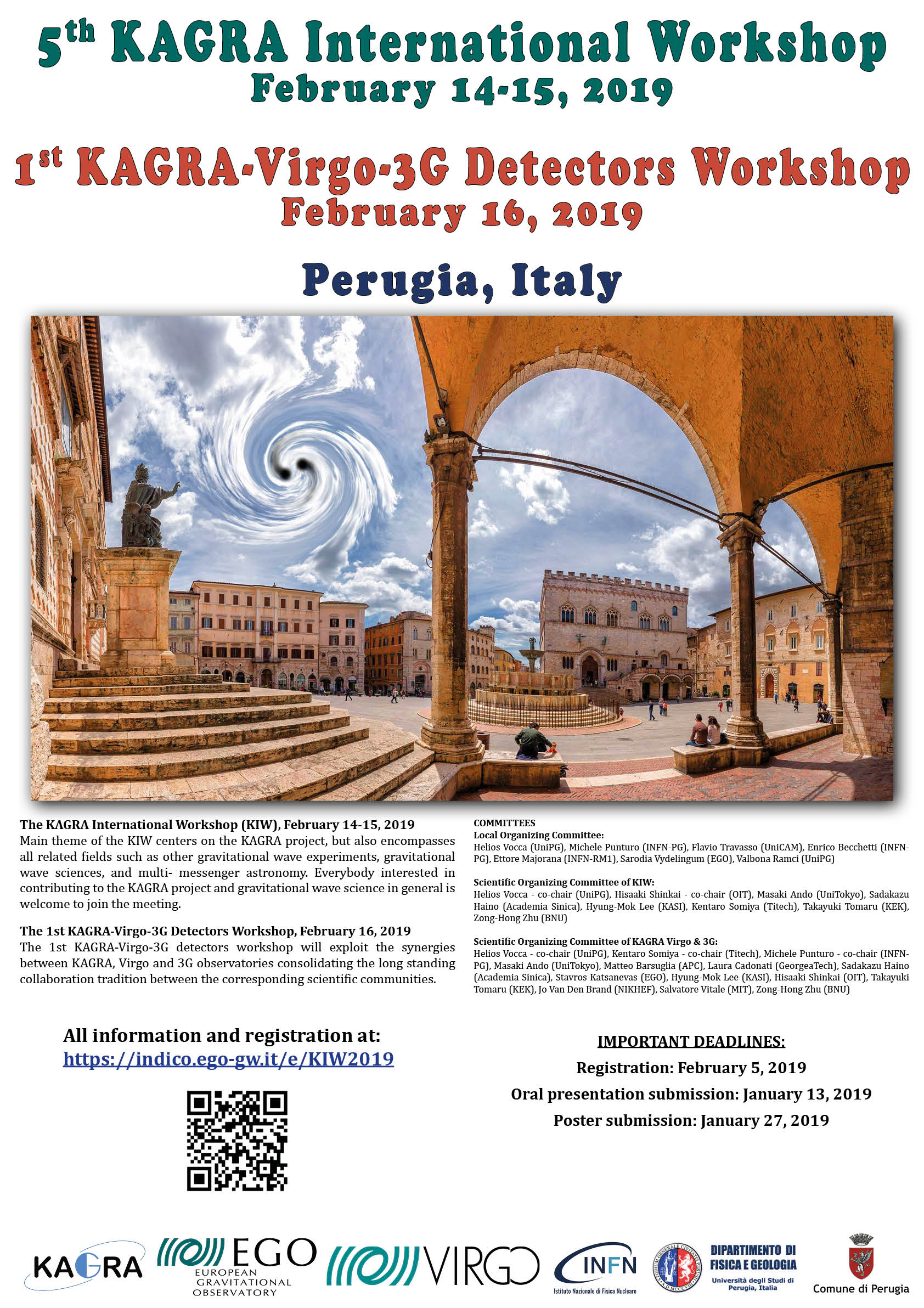 |
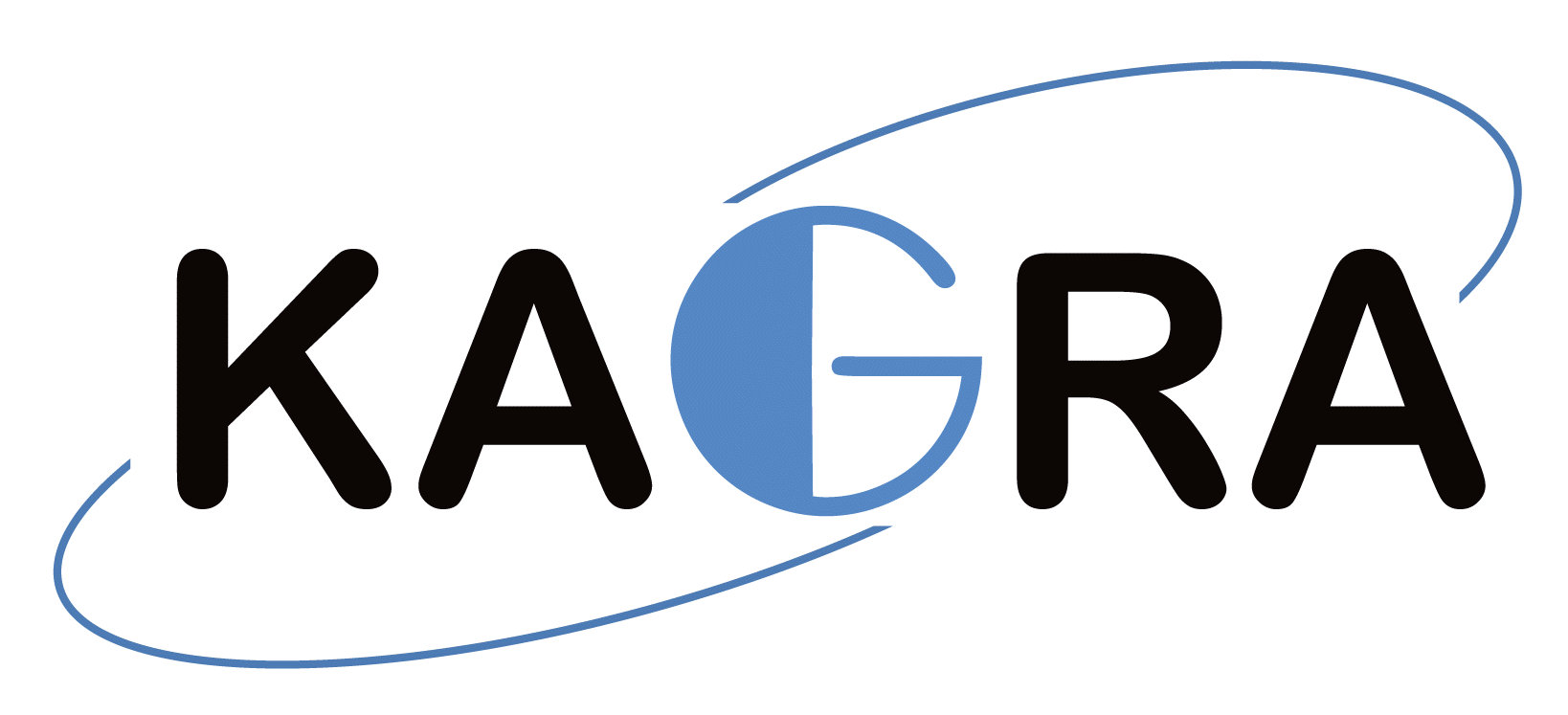 |
 |
 |
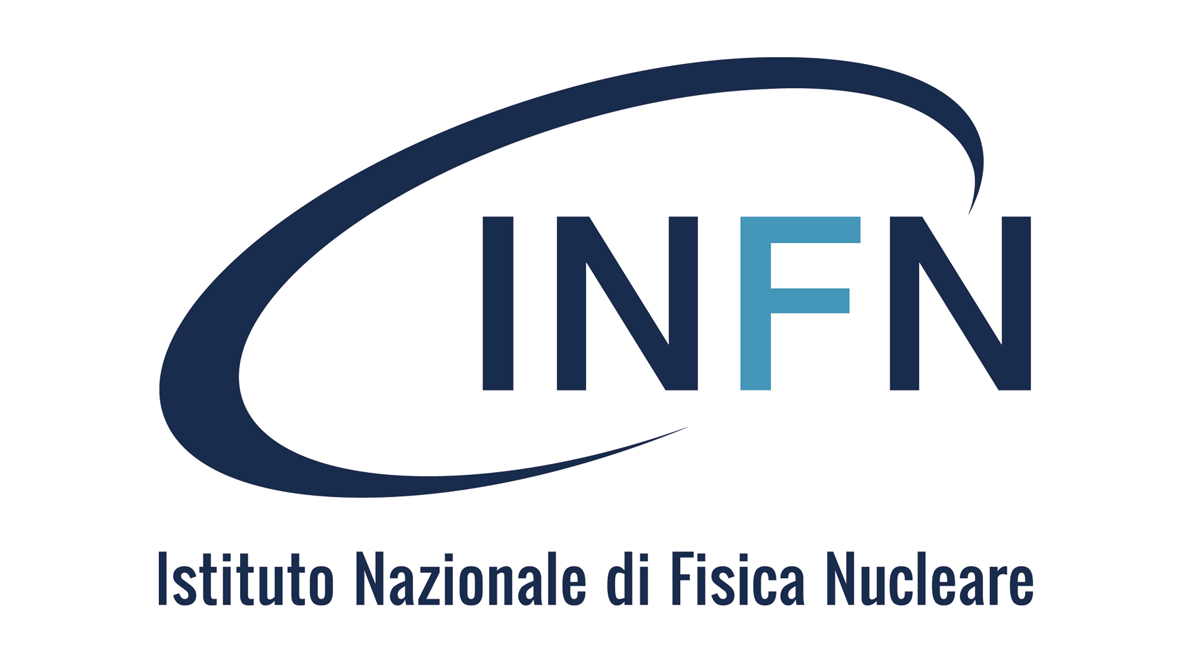 |
 |
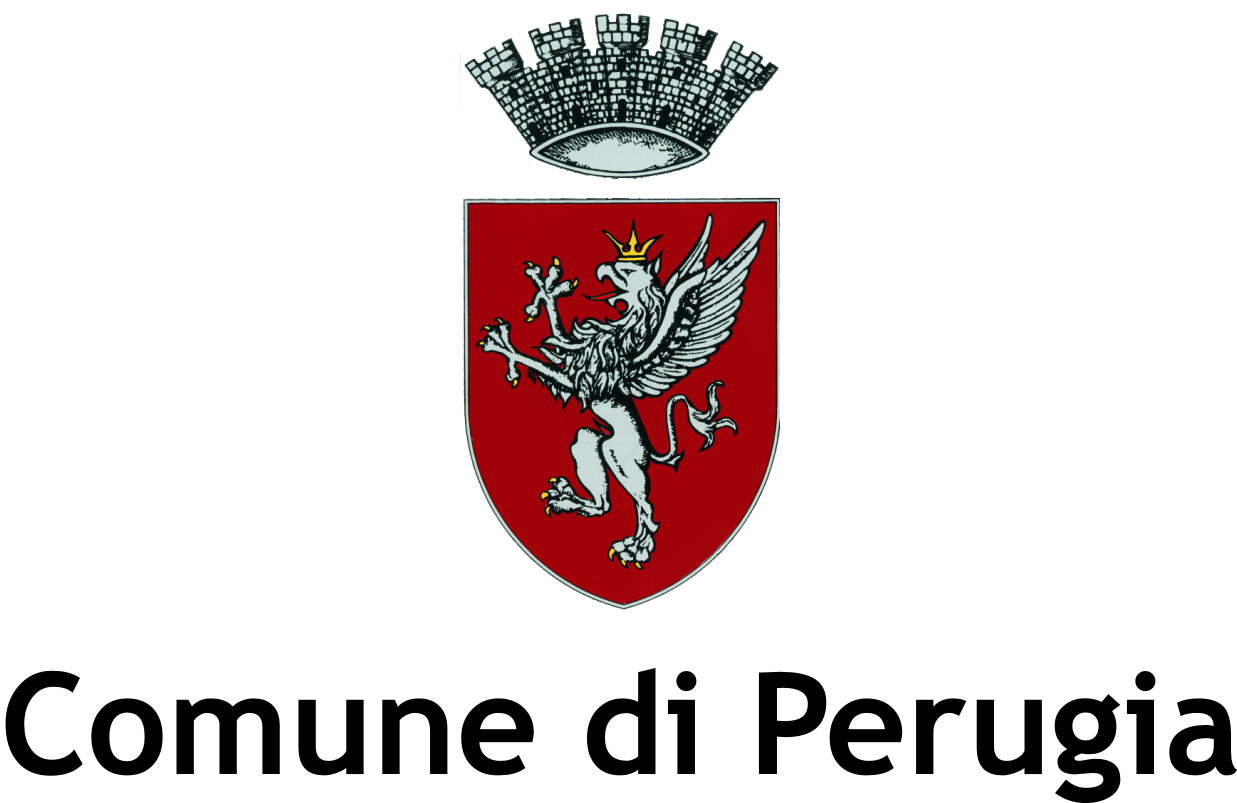 |
-
-
08:30
→
09:30
Registration 1h
-
09:30
→
10:00
Opening and Introduction
-
09:30
Opening 10mSpeaker: Helios Vocca (University of Perugia and INFN)
-
09:40
Welcome talk 10mSpeaker: Maurizio Busso (INFN Perugia Director)
-
09:50
Welcome talk 10mSpeaker: Massimiliano Rinaldo Barchi (Physics and Geology Department Director)
-
09:30
-
10:00
→
11:00
Kagra present statusConvener: Yuta Michimura
- 10:00
-
10:30
Commissioning Status of KAGRA 30mSpeaker: Kiwamu Izumi (ISAS/JAXA)
-
11:00
→
11:30
Coffee break 30m
-
11:30
→
13:00
LIGO/Virgo statusConvener: Helios Vocca (University of Perugia and INFN)
- 11:30
-
12:00
The Status of LIGO 30mSpeaker: Laura Cadonati (Georgia Tech.)
-
12:30
LIGO-Virgo Detector Characterization (DetChar) 30m
Detector characterization (DetChar) is a key component of the direct search for gravitational waves (GW) performed by the global network of large scale ground-based interferometric detectors – the LIGO-Hanford and LIGO-Livingston instruments, the Virgo detector and soon KAGRA. DetChar contributions are manifold: to vet the GW transient candidates detected by the astrophysical analyses; to help these methods to reduce their false alarm rate and hence increase their sensitivity; to support commissioning activities by hunting down noise sources, monitoring changes in the instrument performance and more globally assessing the quality of the raw and reprocessed data. In this talk, I will describe the LIGO and Virgo DetChar activities, emphasizing our joint plans for the coming third Observation Run and the associated open public alert era. I will also stress the existing tools, methods, and strategies that could be of interest for the developing KAGRA DetChar group, including strong interest in having the three DetChar groups work together: joint projects, visiting scientists, etc.
Speaker: Nicolas Arnaud
-
13:00
→
14:30
Lunch 1h 30m
-
14:30
→
19:00
InstrumentationConvener: Takayuki Tomaru
- 14:30
- 14:50
-
15:10
Development and application of cryogenic displacement sensors towards the damping control of KAGRA cryogenic payloads 20m
We developed a cryogenic displacement sensor for KAGRA cryogenic payloads. The cryogenic payload is the suspension system to cool down a sapphire mirror at 20 K in KAGRA. And, the sapphire mirror is suspended the suspension called Type A suspension which height is about 13.5 meter including the cryogenic payload. The cryogenic payload has four stages called platform and marionette and intermediate mass and sapphire mirror. These last three stages are collectively called main chain. And also, the cryogenic payload has another three stages called recoil mass chain corresponding the main chain to control the vibration.
The developed cryogenic displacement sensors are installed on the cryogenic payload and monitors the relative distance between the main chain and the recoil mass chain. And, they are used the damping control to damp the resonance of the cryogenic payload. In this session, we will report the status of the cryogenic displacement sensor and the application towards the damping control of KAGRA cryogenic payloads.Speaker: Masashi Fukunaga (ICRR) -
15:30
Development of an auto-alignment system by machine learning 20mSpeaker: Hiroyuki Tahara (U. Tokyo)
-
15:50
Status of Type B optic suspensions for KAGRA 20m
The BS, SR2, SR3 and SRM optics in KAGRA are supported by "Type B" suspensions incorporating an inverted pendulum stage, three stages of geometric anti-spring filters and a payload consisting of the optic and a recoil mass suspended from an intermediate mass and intermediate recoil mass. All four suspensions have now been installed and are in advanced stages of commissioning. We report on status and the results of characterization.
Speaker: Mark Barton (National Astronomical Observatory of Japan) - 16:10
-
16:30
Coffee break 30m
-
17:00
Implementing the State Space Approach for Controlling a Suspension System in KAGRA 20m
Measuring the transfer function is a good way to know the feature of the suspension in frequency space. However, when we start the observation, we cannot use the real suspension in KAGRA. So it is significant to build a model in state space. In state space, one can use ABCD matrices which includes the information of suspensions. And from this, one can simulate the transfer function and frequency response without using real one. To know the time series of suspension, A. Shoda, Y. Fuji and I implemented the state space to control the suspension. To build the model, we used Matlab and Mathematica.
To check the behavior of time series, I checked the Yaw motion of SR3 intermediate mass (IM) because the Yaw has less coupling and it was expected to act better than other degree of freedoms. The SR3 IM Yaw time series of the step response matched for the first 20 seconds.Speaker: Ryohei Kozu (ICRR (the university of Tokyo)) -
17:20
Status of Type-A suspension for KAGRA 20m
The test masses in KAGRA are suspended by so-called Type-A suspensions. Type-A suspension consists of 9-stage pendulum and the lower 4-stages is to be operated in a cryogenic temperature. In this talk, the status of the installation of the type-A suspensions and an activity with X-arm cavity are going to be reported.
Speaker: Yoshinori Fuji (NAOJ) -
17:40
Status and prospects of the KAGRA detector characterization 20m
The KAGRA gravitational-wave detector is rapidly being commissioned and integrated towards the joint observation run with LIGO and VIRGO.
The laser-interferometer type of the gravitational-wave detectors are based on very complicated optical systems, with numerous feedback control loops at an extreme high precision. Since the interferometer is so complex, there are many possible states of the operation, such as operating stably with low noise, operating with noises whose sources are identified, operating with noises whose sources are unknown, and not operating. Furthermore, the interferometer is affected by the environmental perturbations such as earthquakes and tidal waves of the ocean, through various noise coupling mechanisms.
The goal of the detector characterization team (Detchar) is to understand the behavior of the interferometer, the states of the environment, and various noise coupling mechanisms. The study includes the software developments as well as instrumental experiments. The obtained insights of the interferometer are crucial from the following three aspects:
(i) Data analysis. For when the gravitational-wave channel is analyzed for the event search, Detchar provides the state information of the interferometer which are based on the study of the interferometer behavior. Gravitational-wave channel data is avoided when the interferometer was operating in a bad state so that the efficient searches can be performed and so to avoid false alerts of the gravitational-wave events.
(ii) Instruments. By studying the noise sources and their coupling routes, some of them are identified. When possible, those noises will be mitigated and the interferometer performance will be improved.
(iii) Commissioners. Detchar provides software tools to present the status of the interferometer and environmental information. With such tools, specific plots of the instruments and Detchar results are easily accessible for the commissioners (and anyone in the collaboration) so the noise hunting will be done quicker and more efficiently.Thus, detector characterization team will serve as a "brigade" between the instruments and data analysis studies. In this talk, the prospects of the KAGRA detector characterization towards O3, and the current status are presented.
Speaker: Keiko Kokeyama (ICRR, University of Tokyo) -
18:00
Status of KAGRA Physical Environmental Monitors installation 20m
We will report the progress and future prospect of the KAGRA Physical Environmental Monitors, which is called PEM.
PEM installation is one of the important task to join the O3 observation
because they play a important role of the noise identification/hunting.
Also, because KAGRA is a underground/cryogenic experiment,
the environmental information will be a important information for the future GW detector.
We installed the accelerometers, microphones and magnetometers to PSL room, optical tables and so on
and measured the acoustic field and the magnetic field.Speaker: Takaaki Yokozawa (ICRR) -
18:20
The progress of the calibration and the reconstruction for joining the O3 observation 20m
We are conducting/will conduct the commissioning test of the X-arm cavity, the Y-arm cavity, Dual-Recycled Michelson, and Dual-Recycled Fabry-Perót Michelson toward the O3 observation. As the calibration activities, measuring the IFO response, developing the reconstruction pipeline, and the installing the photon pressure calibrator(pcal) are in progress. The test of the reconstruction pipeline and the injection test pcal are also conducted concurrently with the commissioning test. We will report and discuss the progress and the current situation of the KAGRA calibration activities.
Speaker: Takahiro Yamamoto (ICRR) -
18:40
Status of the input optics for the O3 20m
In this talk, the status of the input optics for the O3 will be reported. The input optics is one of the subsystems in KAGRA, and the objective of the input optics is to provide the stable laser to the main interferometer.
Several in-air and in-vac optics are included in our subsystem. They stabilize the laser frequency and the intensity, reduce the beam jitter, apply the modulation needed for the main interferometer control, and clean the spatial mode of the beam. All components are installed and operated, and they will be operated with high power laser (20 W).Speaker: Nakano Masayuki (ICRR)
-
19:00
→
19:50
Poster session
-
19:00
Long term measurements from Matra Mountain 25m
The Matra Gravitational and Geophysical Laboratory has analized seismic, infra sound, electromagnetic attenuation, muon tomography and seismicity of the Matra Mountain and surrounding area from almost 2-years of data.
In this poster the main results are shown, mainly focusing the seismic data from two different depths (-88 and -404 m).Speaker: Laszlo Somlai (HAS Wigner RCP) -
19:25
Constructing mode mismatch error signals for a 2 μm light Silicon coupled cavity at Gingin 25m
Minimising optical losses in a gravitational wave (GW) detector is important if advanced schemes, such as squeezing and the white light cavity, are to be fruitful. Mode mismatch is a source of optical loss and therefore we need appropriate error signals to minimise it. We present an optical experiment that will be used in the Gingin 2 μm Silicon coupled cavity. This experiment is under construction, but simulations already show we can obtain the error signals we need.
Speaker: Dr Joris van Heijningen (University of Western Australia)
-
19:00
-
08:30
→
09:30
-
-
09:30
→
13:00
Data Analysis and ComputingConvener: Sadakazu Haino
- 09:30
- 10:00
-
10:30
Searching for continuous gravitational waves: data analysis strategies in LIGO/Virgo Collaboration 30m
Gravitational-wave astronomy is one of the youngest and the most dynamically progressing field in modern astronomy. It allows us to observe and understand objects and events invisible in electromagnetic waves. Among promising sources of gravitational waves are that continuously-emitted, periodic and almost-monochromatic gravitational waves are produced e.g. due to the elastically and/or magnetically-driven deformations (mountains on the NS surface supported by the elastic strain or magnetic field), or unstable oscillation modes (e.g., the so-called r-modes). Several data analysis strategies are developed and used by LIGO/Virgo Collaboration, like e.g. F -statistic method, frequency-Hough transform, Cross-Correlation method or 5-vector method. With the increasing number of the ground-based gravitational wave interferometers, sensitivity of continuous gravitational waves searches will improve and one can expect periodic signals to be detected in the future.
Speaker: Magdalena Sieniawska -
11:00
Coffee break 30m
-
11:30
Estimation of background distribution in gravitational wave search 30m
To evaluate the significance of the event, we need to estimate the background distribution of the detection statistic.
The data analysis in LSC collaboration apply the time shift method for the data of two detectors to estimate the significance.
In this talk, we present about the new method to estimate the background distribution and the significance in the compact binary coalescence search.Speaker: Hirotaka Yuzurihara (Institute for Cosmic Ray Research, The University of Tokyo) -
12:00
KISTI cluster 30mSpeaker: Sangwook Bae (KISTI)
-
12:30
Deep learning networks and gravitational wave signal recognization 30mSpeaker: Zhoujian Cao (Beijing Normal University)
-
13:00
→
14:30
Lunch 1h 30m
-
14:30
→
16:00
ScienceConvener: Hisaaki Shinkai
-
14:30
Tests of gravity with GWs 30m
I will give an overview on testing gravity theories in the strong-field regime with gravitational waves. In the near future, GW detectors are promised to deliver more detections with high signal-to-noise ratio, and they will advance the field significantly.
Speaker: Lijing Shao (Kavli Institute for Astronomy and Astrophysics, Peking University) - 15:00
-
15:30
The strong lensed GW-EM system as an astrophysical probe 30mSpeaker: Xilong Fan (Hubei Univ.)
-
14:30
-
16:00
→
16:30
Coffee break 30m
-
16:30
→
18:20
Multi-messengerConvener: Hyung Mok Lee
-
16:30
Optical and NIR observations for gravitational-wave counterpart by J-GEM collaboration 30m
An aim of J-GEM (Japanese collaboration for Gravitational-wave Electro-Magnetic follow-up) is to identify and follow-up a gravitational-wave (GW) electromagnetic (EM ) counterpart in optical and near-infrared wavelengths. J-GEM is constructed by 12 Japanese optical and/or near-infrared telescopes located on different longitudes. The EM counterpart of GW170817 which is a neutron star-neutron star merger has been observed in optical and near-infrared bands by these telescopes of J-GEM. We can observe an EM counterpart whenever the GW alert happens, because of different longitudes of the telescopes. We will perform survey observations of candidate galaxies located on a probable region of a GW arrival direction to identify the EM counterpart of the GW source. To make the survey effectively, we arrange web systems to share real-time information of candidate galaxies for O3 run. Furthermore, our telescopes having large field of views including Subaru/Hyper Suprime-Cam will also perform a survey of the probable region. I will talk about a strategy for the identification and observation of the EM counterpart of the GW source using our optical and/or near-infrared telescopes.
Speaker: Mahito Sasada (Hiroshima Astrophysical Science Center) - 17:00
-
17:30
Physics of relativistic jets from an NS merger 30mSpeaker: Z. Lucas Uhm (Goddard/KASI)
-
18:00
Near-unstable cavities for future gravitational wave detectors 20m
Near-unstable cavities have been proposed as an enabling technology for future gravitational wave detectors, as their compact structure and large beam spot can reduce the thermal noise floor of the interferometer. These cavities operate close to the edge of geometrical stability, and may be driven into instability via small cavity length perturbations or mirror surface distortions. They are at risk of suffering from problems such as high optical scattering loss and Gaussian mode degeneracy. The well-defined Gaussian beams can also be distorted through their interaction with the small imperfections of the mirror surfaces. These issues have an adverse impact on the detector sensitivity and controllability. We will report an experiment designed and built to investigate the technical hurdles associated with near-unstable cavities. A marginally stable table-top cavity is built and accurate control achieved through length and alignment control systems. The experiment provides a detailed account of the behaviour of the near-unstable cavity and of the difficulties that need to be overcome in order to achieve optimal operation. Additionally, we will report the latest simulation study of influences of mirror defects to modes in a near-unstable cavity.
Speaker: Haoyu Wang (Beijing Normal University)
-
16:30
- 18:20 → 18:25
-
18:25
→
18:45
Group picture 20m
-
18:45
→
19:55
Guided Tour 1h 10m
-
20:00
→
23:00
Social Dinner 3h
-
09:30
→
13:00
-
-
08:30
→
09:00
Registration 30m
-
09:00
→
10:55
OpeningConvener: Laura Cadonati (Georgia Tech.)
-
09:00
Welcome and motivations 10mSpeaker: Helios Vocca (University of Perugia and INFN)
-
09:10
EU/Italian-Japan collaboration 15mSpeaker: Enrico Traversa (Italian Embassy scientific attaché)
- 09:25
-
09:55
3G and Einstein Telescope: status 30mSpeaker: Michele Punturo (INFN)
- 10:25
-
09:00
-
10:55
→
11:15
Coffee break 20m
-
11:15
→
13:05
InfrastructuresConvener: Michele Punturo
- 11:15
-
11:35
ET site qualification: Introduction to seismic and Newtonian noise qualification 30mSpeaker: Jan Harms
- 12:05
- 12:35
-
13:05
→
14:00
Lunch 55m
-
14:00
→
14:20
3G-Governance discussion within GWIC-3G 20mSpeaker: Stavros Katsanevas
-
14:20
→
14:50
Signature of the Letter of Intend (KAGRA/ET) 30m
- 14:50 → 15:10
-
15:10
→
19:05
R&D and new technologiesConvener: Yuta Michimura
-
15:10
Report on the vacuum 3G workshop at LIGO 20mSpeaker: Fulvio Ricci
-
15:30
Recent advancements in substrate-transferred crystalline coatings 20m
Owing to their high optical quality and low elastic losses, substrate-transferred crystalline coatings are currently redefining the performance metrics of a range of precision metrology applications including both room temperature and cryogenic mHz-linewidth lasers for optical clocks, stabilized frequency combs for microwave generation, and ultrastable resonators for fundamental physics experiments. These novel coatings are generated by transferring separately grown single-crystal GaAs/AlGaAs heterostructures to arbitrary optical substrates such as fused silica, sapphire, and silicon (among others). With continuous refinement in epitaxial growth and layer transfer, we have realized significant improvements in the near-IR optical performance of these mirrors. For center wavelengths spanning 1000 to 1600 nm, we have reduced the scatter + absorption losses to < 3 parts per million (ppm), enabling a cavity finesse exceeding 600,000 (equivalent to a reflectance > 99.9995%) at 1550 nm. We have now put a strong focus on the development of large area (> 25-mm diameter) and low defect density crystalline coatings, targeting applications in next-generation interferometric gravitational-wave detectors. To date, our direct-bonding process has been demonstrated to a maximum diameter of 200 mm, limited by the size of commercially available GaAs wafers. Given the present capabilities of industrial crystal growers, GaAs boules can now be grown to ~40 cm in diameter. To demonstrate the high quality of the epitaxial growth we have successfully verified that the uniformity of production-grade molecular beam epitaxy systems is sufficient to meet the stringent specifications for these large optics. In this direction we have performed uniformity tests of the material layer thickness (and thus optical transmission), as well as absorption and scatter loss measurements over areas with a diameter of up to 500 mm. These experiments show a clear and promising path towards low-noise crystalline coatings relevant to existing and future gravitational-wave observatories.
Speaker: Garrett Cole (Crystalline Mirror Solutions) -
15:50
Amorphous materials investigation in optical coatings: the VCR&D viewpoint for the 3G detectors 20m
Glasses have open the possibility to discover GW when they have replaced steel suspensions and allowed better mirrors going from the first to the second generation. Would they stand the challenge of the third generation of detectors and that of Multimessenger Astronomy? The presentation is focused on answering this question, showing the efforts of the Virgo Coating R&D collaboration and the vision of the working group g-MAG about the sapphire technology.
Speaker: Gianpietro Cagnoli (Université Claude Bernard Lyon1) -
16:10
Coffee break 25m
-
16:35
Fabrication of amorphous and crystalline mirror coatings for reaching the thermal noise requirements for 3G detectors 20mSpeaker: Stuart Reid
-
16:55
Status of the frequency dependent squeezing experiment at TAMA 20m
The generation of frequency dependent squeezing with ~100 scale filter cavities is a promising technique to obtain a broadband quantum noise mitigation in 2nd generation GW detectors and its implementation is planned in their near-term upgrade. At NAOJ, we are developing a 300 m filter cavity prototype in order to demonstrate squeezing angle rotation below 100 Hz, as required for an optimal noise reduction. The update on the experiment will be presented.
Speaker: Eleonora Capocasa (National Astronomical Observatory of Japan) -
17:15
Results of the first injection of FIS in Advanced Virgo 10m
Second generation gravitational-wave (GW) detectors are mainly limited by quantum noise, produced by vacuum fluctuations entering the interferometer from the dark port. Vacuum fluctuations have equal uncertainty in phase, associated to shot noise which limits the sensitivity at high-frequencies and amplitude, associated to radiation pressure noise which limits the sensitivity at low-frequencies. The injection of a squeezed vacuum from the dark port has been proposed as a strategy to decrease quantum noise without modifying the configuration of the interferometer. In a squeezed vacuum state, amplitude and phase uncertainties are modified: one is reduced at the expense of the other, originating the squeezing ellipse. Since phase and amplitude uncertainties depend on the frequency, the injection of a frequency independent squeezed (FIS) vacuum state mitigates quantum noise only where the GW signal is aligned with the reduced uncertainty.
In this talk, the first results obtained injecting a FIS vacuum state in Advanced Virgo will be presented.Speaker: Matteo Tacca -
17:25
Development of audio-band frequency-dependent vacuum squeezer for Advanced Virgo Gravitational Wave detector 20m
Quantum Noise (QN) is a phenomenon which gives high contribution to the overall noise in the advanced interferometric Gravitational Wave detectors. In the revious interferometer generation the most relevant QN component was dominating in the high frequency region (300 Hz-10 kHz) of the detection band which could be corrected by injection of optimal squeezed state [1]. Virgo Scientific Collaboration is currently working on implementation of an audio–band frequency–dependent squeezing injection to the readout port of Advanced Virgo.
A facility for the production of squeezed vacuum in the audio–frequency band is being developed and preliminary measurements have been performed. The facility represents a first step toward implementation of the new squeezing generation technique [2]. It is aimed at decreasing the radiation pressure noise that now limits the sensitivity in the low frequency detection band. For the purpose of the project Perugia group assembled a test bench for development of various types of photo-detector as low noise, fast, demodulated on-board and homodyne detectors.
In the presentation I overview the current state of work on the facility and I summarize in details tasks related to the development of electronics and software. In particular I present the engineering of analogue electronics for cavity locking and squeezed state measurement. In the conclusions I include the near future steps: noise hunting, lock automation and commissioning phase of the squeezer bench.Speaker: Mateusz Bawaj (INFN Perugia) -
17:45
Purity of 10dB vacuum noise squeezing at 1064 nm 20m
In this talk, I will report our recent implementation of squeezed vacuum states at 1064 nm. With a bow-tie, optical parametric oscillator cavity, and our home-made balanced homodyne detectors, noise reduction up to 10dB below the vacuum is measured. With the operation of a 300 m filter cavity prototype installed at the National Astronomical Observatory of Japan, status of such a vacuum squeezed state is going to be injected from the output port of the detector, in order to achieve a broadband reduction.
Speaker: Ray-Kuang Lee (National Tsing Hua University) -
18:05
Geometric contoured Euler springs for vertical vibration isolation in future gravitational wave detectors 20m
Euler buckling springs have demonstrated benefits over conventional blade springs used in Advanced LIGO suspensions and magnetic- and geometric anti-spring (GAS) filters used in Advanced Virgo. Firstly, the resonance frequency - essentially the frequency where seismic cut-off starts - is relatively low for the spring size. Secondly, the reduced spring mass increases the internal mode frequency within the spring blade, which moves them in a frequency region where the transfer function is so small that they do not pose a problem.
I will present two further improvements made over the last year in the UWA gravitational wave group. One improvement reduces the blade stiffness and the effect of internal spring modes by optimising the Euler spring geometric profile. The second improvement further reduces the effective resonance frequency by using the Euler spring under an angle instead of purely vertical. Combing these two improvements will result in a novel LaCoste-like stage with a resonance frequency of below 100 mHz which can act as a vertical pre-isolation stage for future gravitational wave detectors. We will argue that, in order to measure gravitational waves from 2 Hz onwards, vertical pre-isolation is key.Speaker: Joris van Heijningen (University of Western Australia) -
18:25
Newtonian noise measurement by Torsion-Bar Antenna 20m
Newtonian noise (NN) is local gravity fluctuation caused by seismic waves, atmospheric fluctuations, human activity and so on. NN is estimated to be a significant noise in low frequencies in future GW detectors. However, NN have been not measured for now, so its direct measurement is essential for reduction.
Torsion-Bar Antenna (TOBA) is a GW detector using torsion pendulums. TOBA is also sensitive to NN and estimated to be feasible to measure NN directly less than 1 Hz. Currently we are developing a small scale prototype. Here we explain about the current status and future plans for TOBA.Speaker: Satoru Takano (University of Tokyo) -
18:45
The Cryomirror project for fast payload cooldown 20m
Cryogenics, currently pioneered by KAGRA, is a common feature of basically any 3G GW interferometer (IFO) proposal and many mid-term upgrades. One of the main issues in the operation of cryogenic GW IFOs is that the extreme vibration isolation needed for the best sensitivity demands a tradeoff between cooling power and additional mechanical noise. The priority is obviously given to science performance and the minimization the noise while the detector is in operation, thus reducing the heat-extraction capability to the minimum necessary to maintain the IFO in steady state when cold. This poses a serious limit during initial cool-down, when the required heat flux is much larger. Depending on the specific detector design, the time required for cooling down the mirrors from room temperature can be of few weeks or even much longer. This represents a severe constraints on the schedule of commissioning and maintenance activities, and could have a potentially disastrous impact on overall duty cycle.
The “Cryomirror” project explores a convenient solution to this problem by disentangling the process of initial cooldown of the mirrors from that of keeping them cold during operation, exploiting the widely different set of requirements and constraints of the two phases. The basic idea is that of establishing an efficient temporary thermal link between the mirror and a cold source; the link must be able to be completely disengaged once the target temperature has been reached, leaving the cooled mirror ready for operation and with no impact from the presence of the cooling device.
The goal is to lower to the order of 1 week or less the time required for cooling the payload of an ET-like detector, substantially improving the overall duty cycle and with no negative impact on the mechanical noise isolation performance during operation.
The project has been the subject of a proposal currently not funded. During the talk we will present some of the details the proposal, including key aspects that have been identified and possible tackling strategies. The intent is that of initiating a wider discussion and establish possible collaborations.Speaker: Giacomo Ciani
-
15:10
-
19:05
→
19:15
Conclusion 10mSpeaker: TBD
-
08:30
→
09:00
